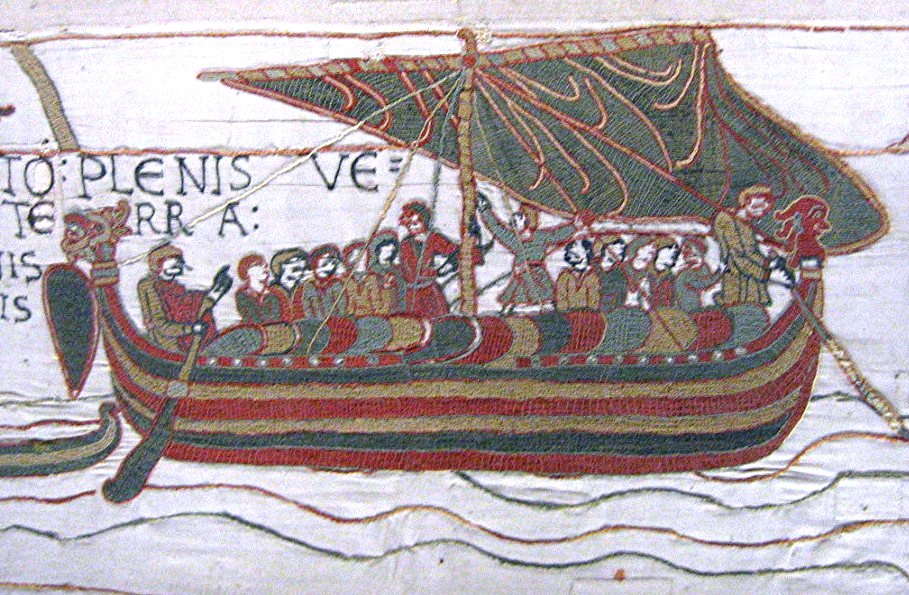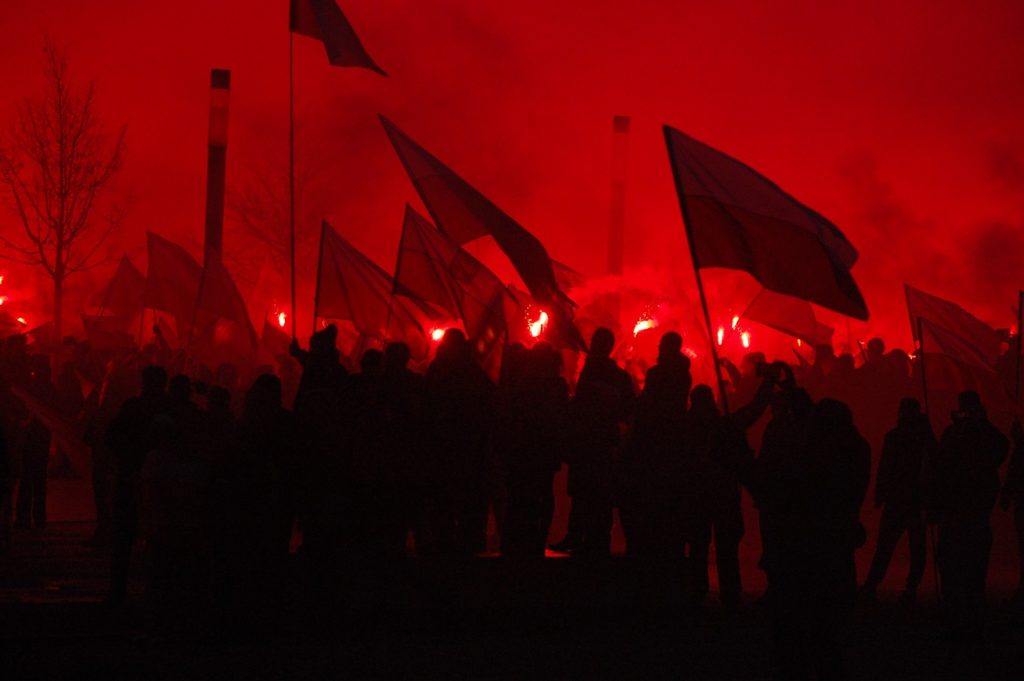Medieval State of Mind: The Importance of the Middle Ages to Alt-Right Rhetoric

Alt-Right rallies can sometimes take on the tone of racist Renaissance Fairs. Viking-esque shields and helmets can often be observed peppered in among the [Nazi flags and posters bearing Pepe the Frog’s face], as can other forms of medieval European imagery — and it’s due to the fact that the concept for a purely white medieval Europe features heavily in Alt-Right imagery and represents an extremely important facet of Alt-Right rhetoric.
In the interest of clarity, the time period referred to in this article as the medieval or middle ages began at approximately 1000 CE and ended around 500 years later. The five centuries immediately preceding medieval times are known as the Dark Ages, though certain definitions of these two eras may overlap. This time period was known primarily for the rise of feudalism.
Romanticised notions of this bygone era have inspired and affected many cultural touch points which still influence popular culture today. Epic stories of fiction like the Chronicles of Narnia, Game of Thrones, and The Lord of the Rings draw heavily on fantasized medieval themes, and in turn affect public perception of the middle ages. In fact, when J.R.R. Tolkien set out to write the Lord of the Rings series, he was not simply trying to write an entertaining story; his intention was to retell and popularize British mythology. He succeeded to the point that even today, the concept of Middle Earth is inexorably linked to the idea of the middle ages.
The combination of these cultural elements with the overwhelming lack of emphasis on people of colour throughout history in the Western education system, as well as the assumption that diversity due to globalisation, long distance travel, and immigration as modern phenomena combined to create the myth of a purely white Europe.
The fact is, this myth could not be further from the truth. While most Europeans today (and in medieval times) are and were white, there is significant evidence that points to successful European contact and trade with Asia, as well as the presence of well established African communities in Rome and Spain. Medieval Sicily was a bastion of diversity where “Norman kings employed Arab and Jewish administrators.” What’s more, during the middle ages, Eastern civilizations far outpaced Europe in terms of technological advancement.

The middle ages is by no means the only historic era that has experienced whitewashing. Most popular depictions of ancient Romans, for example, show white people in togas, when in fact the Romans were a very diverse population, and people of colour traveled throughout the empire (even as far as Northern England) for a variety of reasons. What makes the whitewashing of medieval times particularly troubling is the substantial impact that it has had on Alt-Right rhetoric.
In addition to antisemitism and homophobia, certain factions of the Alt-Right, both in North America and Europe, are known to advocate for the creation of ethno states based on their ardent belief in white supremacy. Richard Spencer, a well-known member of the Alt-Right, has repeatedly spoken about his dream of an all-white country, and has confirmed the possibility of realizing said dream through violence. Last year in Poland, a nationalist rally drew a crowd of 60,000 people, many of whom were demonstrably part of the Alt-Right movement. Some individuals took the opportunity to brazenly proclaim their racist views in a variety of ways, such as through a banner that read “Europe will be white or uninhabited.”
The myth of a white Europe is regularly used as a basis for justifying these racist beliefs, and the argument boils down to claiming Europe as a historically white homeland which should remain as such. Ironically, considering the Alt-Right’s disdain for globalism, the benefit of such a rhetoric is that it is meant to unify members of the Alt-Right that are scattered around the world. Additionally, the myth mostly romanticizes northern Europe as opposed to the southern parts of the continent, which plays into long-held prejudices against Southern Europeans.
Viking imagery, in particular, is often used by the Alt-Right, probably due to the common conception of Vikings as enormous blond warriors, paragons of white masculinity who slaughtered their enemies in droves. Some members of the Alt-Right even go so far as to “[drink] mead from a traditional Viking horn and [pray] to the Norse god Odin.”

However, much like the myth of an entirely white Europe, the way popular culture portrays vikings is based much more in fiction than in fact. From what recent discoveries have revealed, Vikings did not have much, if anything in common with the Alt-Right. For starters, Vikings were not ethnically pure. Due to the long voyages Vikings undertook to places as far as (the Byzantine Empire), interracial and intercultural relations were far from uncommon. The discovery of Arabic script on Viking funeral clothes found just north of Stockholm further suggests that Vikings interacted and returned home with foreign people and cultures that they continued to observe. Additionally, Viking warriors were not only men; women went on campaign as well, and it has recently been discovered that a famous Viking warrior long believed to be a man was in fact a woman. Even gender norms in Viking communities were rather egalitarian: women could have political influence depending on the situation, were responsible for maintaining their households, and were allowed to divorce their husbands. The evidence is striking, and shows that the parallel being drawn between the Alt-Right and the so-called purely white, ideally European Vikings is completely unfounded.
Despite the fact that nearly all Alt-Right interest in medieval and Viking culture is based on misinformation and myths, the use of medieval imagery remains a cornerstone of Alt-Right rhetoric. In an effort to curb the effectiveness of said rhetoric a number of groups, such as Vikings Against Racism have started re-education initiatives aimed at divorcing so-called “Viking culture” from the modern racist connotations that plague it. One thing is certain, however: if the Alt-Right were to travel back in time to the era they celebrate so fervently, they would be sorely disappointed by what would welcome them.
Edited by Leila Mathy
